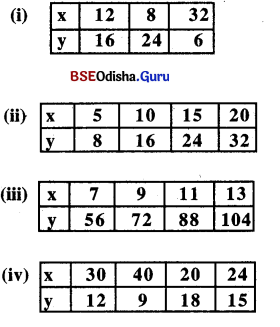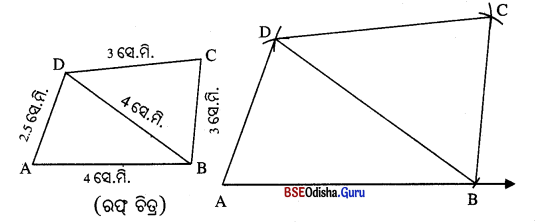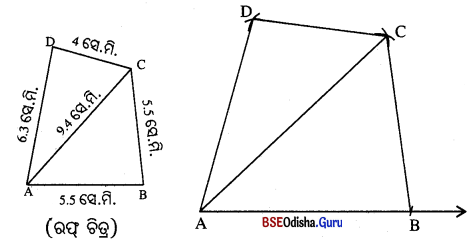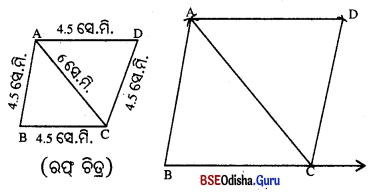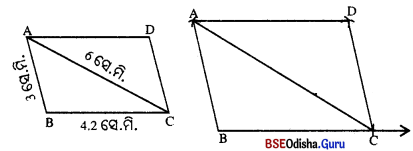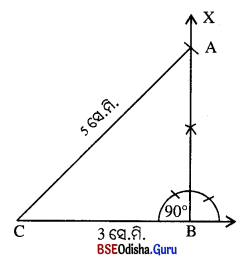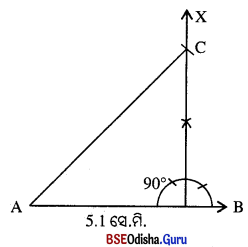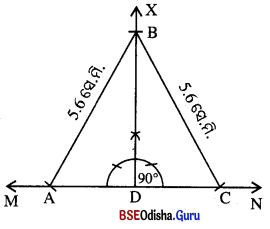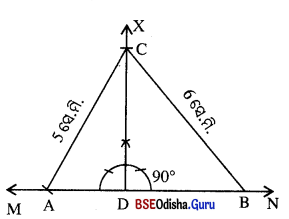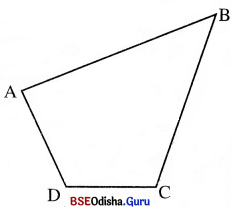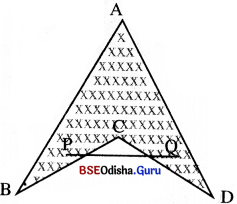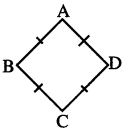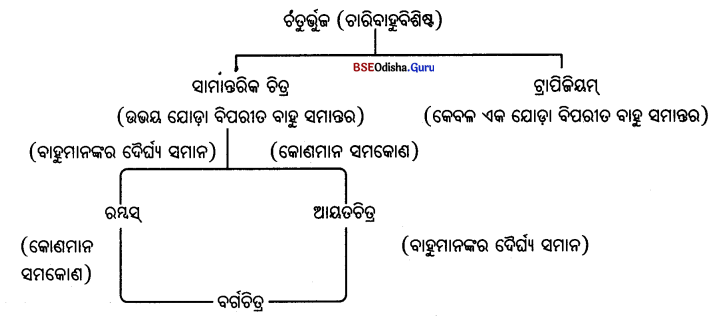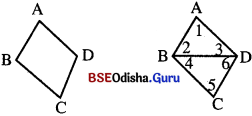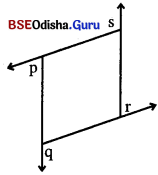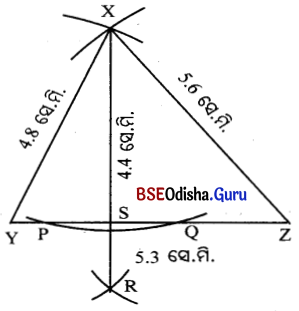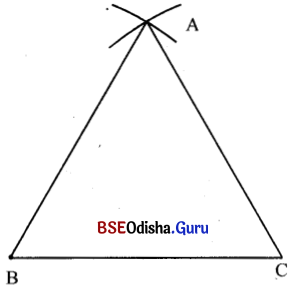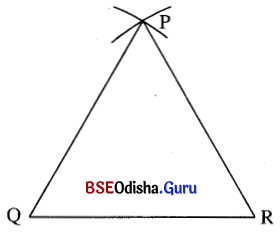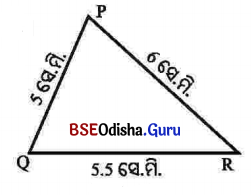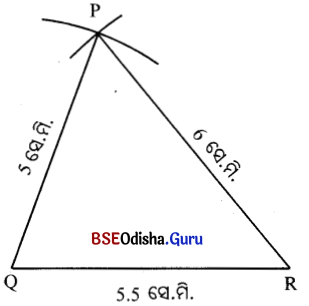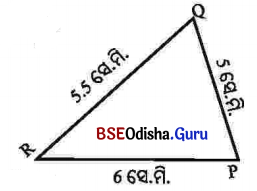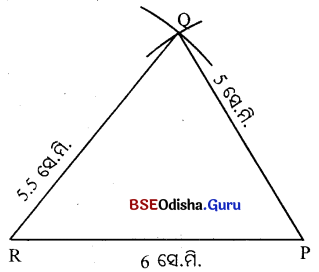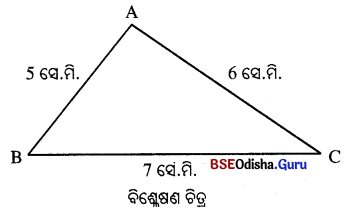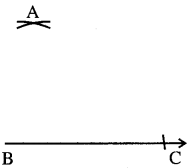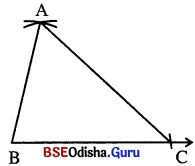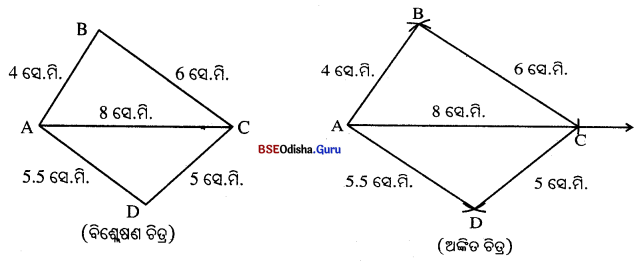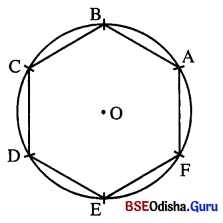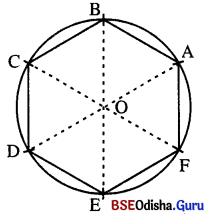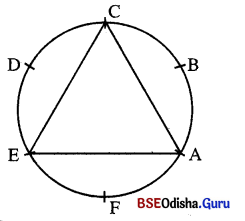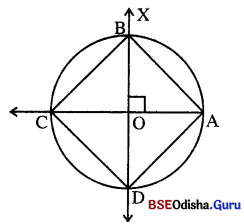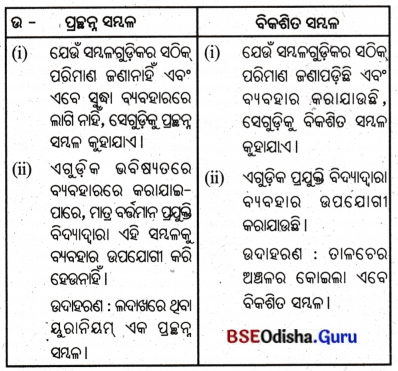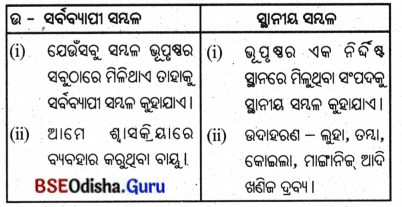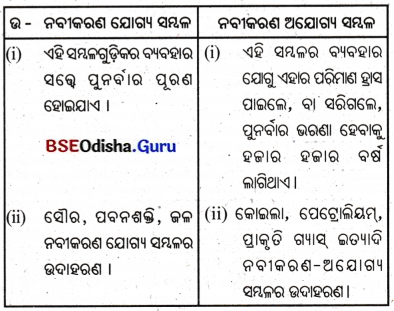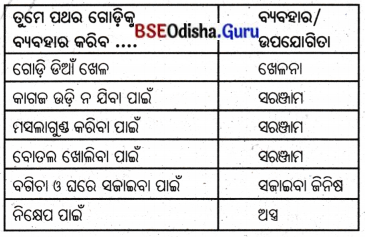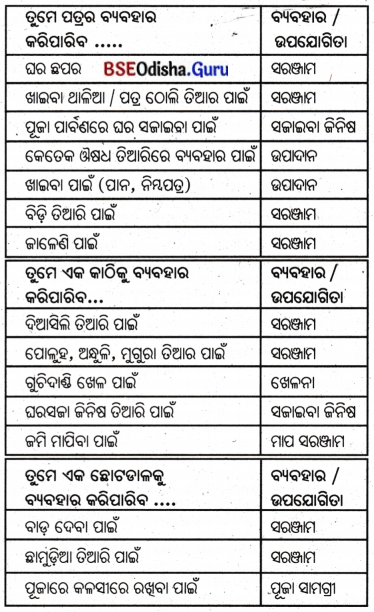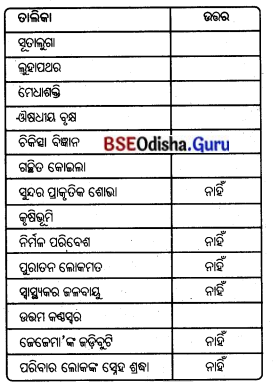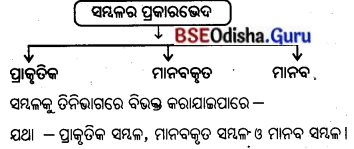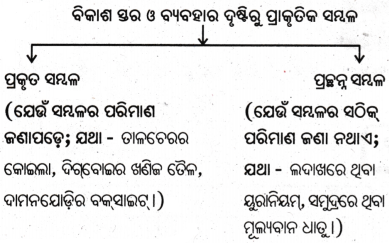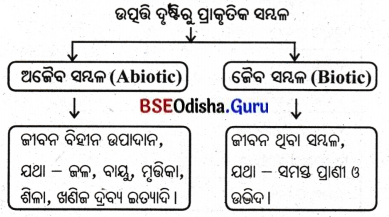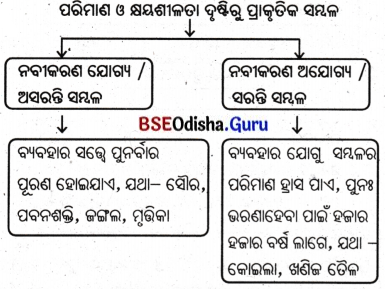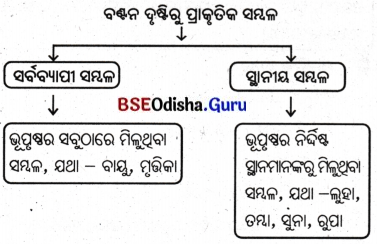Odisha State Board CHSE Odisha Class 12 Economics Solutions Chapter 1 ଅର୍ଥଶାସ୍ତ୍ରର ସଂଜ୍ଞା, ପରିସର ଓ ବିଷୟବସ୍ତୁ Objective & Short Answer Questions.
CHSE Odisha 12th Class Economics Chapter 1 Objective & Short Answer Questions in Odia Medium
ବସ୍ତୁନିଷ୍ଠ ଓ ଅତିସଂକ୍ଷିପ୍ତ ପ୍ରଶ୍ନୋତ୍ତର
A ପ୍ରତ୍ୟେକ ପ୍ରଶ୍ନରେ ପ୍ରଦତ୍ତ ବିକଳ୍ପଗୁଡ଼ିକ ମଧ୍ୟରୁ ସଠିକ୍ ଉତ୍ତରଟି ବାଛି ଲେଖ ।
1 . ନିମ୍ନୋକ୍ତ ମଧ୍ଯରୁ କିଏ ଅର୍ଥଶାସ୍ତ୍ରର ଜନକ ଅଟନ୍ତି ?
(A ) କେସ୍
(B) ମାର୍ଶାଲ୍
(C) ଆଡ଼ାମ୍ ସ୍ମିଥ୍
(D) ରବିନ୍ସ୍
Answer:
(C) ଆଡ଼ାମ୍ ସ୍ମିଥ୍
2 . ଅର୍ଥନୀତି କେଉଁ ପ୍ରକାରର ବିଜ୍ଞାନ ଅଟେ ?
(A) ପ୍ରାକୃତିକ ବିଜ୍ଞାନ
(B) ଭୌତିକ ବିଜ୍ଞାନ
(C) ସାମାଜିକ ବିଜ୍ଞାନ
(D) କୌଣସିଟି ନୁହେଁ
Answer:
(C) ସାମାଜିକ ବିଜ୍ଞାନ
3 . ଆଡ଼ାମ୍ ସ୍ମିଥଙ୍କଦ୍ୱାରା ନିରୂପଣ କରାଯାଇଥିବା ଅର୍ଥଶାସ୍ତ୍ରର ସଂଜ୍ଞାକୁ କେଉଁ ସଂଜ୍ଞା କୁହାଯାଏ ?
(A) କଲ୍ୟାଣକାରୀ ସଂଜ୍ଞା
(B) ସମ୍ପଦ ସଂଜ୍ଞା
(C) ସ୍ଵଚ୍ଛତା ସଂଜ୍ଞା
(D) ଅଭିବୃଦ୍ଧି ସଂଜ୍ଞା
Answer:
(B) ସମ୍ପଦ ସଂଜ୍ଞା
4 . ନିମ୍ନୋକ୍ତ ମଧ୍ୟରୁ କିଏ କଲ୍ୟାଣକାରୀ ସଂଜ୍ଞାର ପ୍ରବର୍ତ୍ତକ ଅଟନ୍ତି ?
(A) ଆଡ଼ାମ୍ ସ୍ମିଥ୍
(B) ରବିସ୍
(C) ମାର୍ଶାଲ୍
(D) ପିଗୁ
Answer:
(C) ମାର୍ଶାଲ୍
5 . ରବିନ୍ସ୍ଙ୍କ ସଂଜ୍ଞା କେଉଁ ଉପାଦାନ ଉପରେ ଆଧାରିତ ?
(A) ସ୍ଵଳ୍ପତା ଓ ଜନକଲ୍ୟାଣ
(B) ସ୍ଵଚ୍ଛତା ଓ ମନୋନୟନ
(C) ସ୍ଵଚ୍ଛତା ଓ ଅଭିବୃଦ୍ଧି
(D) ଉପରୋକ୍ତ ସମସ୍ତ
Answer:
(B) ସ୍ଵଚ୍ଛତା ଓ ମନୋନୟନ
![]()
6. ‘ଅର୍ଥନୀତି ବିଜ୍ଞାନର ପ୍ରକୃତି ଓ ତାତ୍ପର୍ଯ୍ୟ ସମ୍ବନ୍ଧୀୟ ପ୍ରବନ୍ଧ’ର ରଚୟିତା କିଏ ?
(A) ଆଡ଼ାମ୍ ସ୍ମିଥ୍
(B) ମାର୍ଶାଲ୍
(C) ରବିନ୍ସ୍
(D) କେସ୍
Answer:
(C) ରବିନ୍ସ୍
7. ଅର୍ଥଶାସ୍ତ୍ର କେଉଁ ବର୍ଷ ସୃଷ୍ଟି ହୋଇଥିଲା ?
(A) 1883
(B) 1772
(C) 1553
(D) 1776
Answer:
(D) 1776
8. ଅର୍ଥଶାସ୍ତ୍ରକୁ କିଏ ନୈରାଶ୍ୟ ବିଜ୍ଞାନ ବୋଲି ସମାଲୋଚନା କରିଥିଲେ ?
(A) ଆରିଷ୍ଟୋଟଲ୍
(B) ରସ୍କିନ୍
(C) ସୁଟର
(D) ମାର୍ଶାଲ
Answer:
(B) ରସ୍କିନ୍
9. ଅର୍ଥଶାସ୍ତ୍ରକୁ କିଏ ପ୍ରଥମେ ବ୍ୟଷ୍ଟି ଓ ସମଷ୍ଟି ଅର୍ଥଶାସ୍ତ୍ରରେ ବିଭକ୍ତ କରିଥିଲେ ?
(A) ଫ୍ରିସିକ୍
(B) ଆଡ଼ାମ୍ ସ୍ମିଥ୍
(C) ମାର୍ଶାଲ୍
(D) କେସ୍
Answer:
(A) ଫ୍ରିସିକ୍
10. ନିମ୍ନୋକ୍ତ କେଉଁଟି ବ୍ୟଷ୍ଟି ଅର୍ଥନୀତିର ପରିସରଭୁକ୍ତ ?
(A) ଉପଭୋକ୍ତାଙ୍କ ଆଚରଣ
(B) ସାମୂହିକ ଚାହିଦା
(C) ଜାତୀୟ ଆୟ
(D) ସାମୂହିକ ବିନିଯୋଗ
Answer:
(A) ଉପଭୋକ୍ତାଙ୍କ ଆଚରଣ
11. ନିମ୍ନଲିଖ ମଧ୍ୟରୁ କିଏ ଅର୍ଥନୀତିର ସମ୍ପଦ ସଂଜ୍ଞା ପ୍ରଦାନ କରିଥିଲେ ।
(A) ଆଡ଼ାମ୍ ସ୍ମିଥ୍
(B) ଆଲ୍ଫ୍ରେଡ୍ ମାର୍ଶାଲ୍
(C) ଲିଓନେଲ୍ ରବି
(D) ପଲ୍ ସାମୁଏଲ୍ସନ୍
Answer:
(A) ଆଡ଼ାମ୍ ସ୍ମିଥ୍
12. କିଏ ଅର୍ଥଶାସ୍ତ୍ରକୁ ମନୋନୟନ ବିଜ୍ଞାନ ବୋଲି ବର୍ଣ୍ଣନା କରିଥିଲେ ?
(A) ଆଡ଼ାମ୍ ସ୍ମିଥ୍
(B) ଆଲ୍ଫ୍ରେଡ୍ ମାର୍ଶାଲ୍
(C) ଜେ.ବି. ଶ
(D) ଲିଓନେଲ୍ ରବିନସ୍
Answer:
(B) ଆଲ୍ଫ୍ରେଡ୍ ମାର୍ଶାଲ୍
13. ଡ଼ାମ୍ ସ୍ମିଥ୍ଙ୍କଦ୍ୱାରା ପ୍ରଦତ୍ତ ଅର୍ଥଶାସ୍ତ୍ରର ସଂଜ୍ଞାକୁ କେଉଁ ସଂଜ୍ଞା କୁହାଯାଏ ?
(A) ଅଭିବୃଦ୍ଧି ସଂଜ୍ଞା
(B) ସଂପଦ ସଂଜ୍ଞା
(C) କଲ୍ୟାଣକାରୀ ସଂଜ୍ଞା
(D) ସ୍ଵଚ୍ଛତା ସଂଜ୍ଞା
Answer:
(B) ସଂପଦ ସଂଜ୍ଞା
B. ଶୂନ୍ୟସ୍ଥାନ ପୂରଣ କର ।
1. ଅର୍ଥଶାସ୍ତ୍ରର କନକ ହେଉଛନିୁ _______ ।
Answer:
ଆଡ଼ାମ୍ ସ୍ମିଥ୍
2. ଅର୍ଥଶାସ୍ତ୍ରର କଲ୍ୟାଣକାରା ସଂଜ୍ଞା _______ ଙ୍କଦ୍ଵାରା ପ୍ରଦତ୍ତ ।
Answer:
ଆଲଫ୍ରେଡ୍ ମାର୍ଶାଲ
3. ଅର୍ଥଶାସ୍ତ୍ରର ସମ୍ପଦ ସଂଜ୍ଞା _______ ସାଧନ ଉପରେ ଆଧାରିତ ।
Answer:
ଭୌତିକ ସମ୍ପଦର ଅଧ୍ୟଗ୍ରହଣ
4. ଅର୍ଥଶାସ୍ତ୍ରକୁ _______ ନୈରାଶ୍ୟ ବିଜ୍ଞାନ ବୋଲି ସମାଲୋଚନା କରିଥିଲେ ।
Answer:
ରସ୍କିନ୍
5. ଅର୍ଥଶାସ୍ତ୍ରକୁ _______ ରୁଟି ଓ ଲହୁଣୀ ବିଜ୍ଞାନ ବୋଲି ସମାଲୋଚନା କରିଥିଲେ ।
Answer:
କାର୍ଲାଇଲ୍
6. ଅର୍ଥଶାସ୍ତ୍ରର ସମ୍ପଦ ସଂଜ୍ଞା _______ ପ୍ରଦାନ କରିଥିଲେ ।
Answer:
ଆଡ଼ାମ୍ ସ୍ମିଥ୍
7. ଅର୍ଥଶାସ୍ତ୍ରକୁ _______ ଧନଦେବୀଙ୍କ ବାଣୀ ଭାବେ ସମାଲୋଚନା କରିଥିଲେ ।
Answer:
କାର୍ଲାଇଲ୍
8. ଅର୍ଥଶାସ୍ତ୍ରର କଲ୍ୟାଣ ସଂଜ୍ଞା _______ ପୁପୃକରେ ଆଲୋଚନା କରାଯାଇଅଛି_
Answer:
Principle of Economics
![]()
9. ଦୁଷ୍ଟ୍ରାପ୍ୟତା ସଂଜ୍ଞା _______ ପ୍ରଦାନ କରିଥିଲେ ।
Answer:
ଲିଓନେଲ୍ ରବିନ୍ସ୍
10. ରବିନ୍ସଙ୍କର ଦୁଷ୍ଟ୍ରାପ୍ୟତା ସଂଜ୍ଞା _______ ଉପାଦାନ ଉପରେ ଆଧାରିତ ।
Answer:
ସାଧନର ସ୍ଵଚ୍ଛତା ଓ ଚୟନ
11. ଅର୍ଥଶାସ୍ତ୍ରକୁ ମୁଖ୍ୟତଃ _______ ଦୁଇଭାଗରେ ବିଭକ୍ତ କରିଥିଲେ ।
Answer:
ଫ୍ରିସିକ୍ ।
C. ନିମ୍ନଲିଖ ଉକ୍ତିଗୁଡ଼ିକ ଭୁଲ୍ କି ଠିକ୍ ଲେଖ । ରେଖାଙ୍କିତ ଅଂଶର ପରିବର୍ତ୍ତନ ନ କରି ଆବଶ୍ୟକ ସ୍ଥଳେ ସଂଶୋଧନ କର ।
1. ‘ଅର୍ଥନୀତି ତତ୍ତ୍ବ’ ପୁସ୍ତକ ରବିନ୍ସ୍ଙ୍କଦ୍ଵାରା ଲିଖ୍ ।
Answer:
ଭୁଲ୍ ।
ଠିକ୍ – ‘ଅର୍ଥନୀତି ତତ୍ତ୍ବ’ ପୁସ୍ତକ ମାର୍ଶାଲଙ୍କଦ୍ଵାରା ଲିଖ୍ ।
2. ରସ୍କିନ୍ ଅର୍ଥଶାସ୍ତ୍ରକୁ ସାମାଜିକ ବିଜ୍ଞାନ ବୋଲି ଅଭିହିତ କରିଥିଲେ ।
Answer:
ଭୁଲ୍ ।
ଠିକ୍ – ରସ୍କିନ୍ ଅର୍ଥଶାସ୍ତ୍ରକୁ ବିମର୍ଷ ବିଜ୍ଞାନ ବୋଲି ଅଭିହିତ କରିଥିଲେ ।
3. “ ଅର୍ଥନୈତିକ ବିଜ୍ଞାନର ପ୍ରକୃତି ଓ ଗୁରୁତୁ’’ ଶୀର୍ଷକ ପୁସ୍ତକର ଲେଖକ ଆଲଫ୍ରେଡ୍ ମାର୍ଶାଲ୍ ।
Answer:
ଭୁଲ୍ ।
ଠିକ୍ – ‘ଅର୍ଥନୈତିକ ବିଜ୍ଞାନର ପ୍ରକୃତି ଓ ଗୁରୁତ୍ଵ’’ ଶୀର୍ଷକ ପୁସ୍ତକର ଲେଖକ ଲିଓନେଲ୍ ରବିନ୍ସ୍ ।
4. ଆଡ଼ାମ୍ ସ୍ମିଥ୍ ଅର୍ଥଶାସ୍ତ୍ରକୁ କଲ୍ୟାଣକାରୀ ବିଜ୍ଞାନ ରୂପେ ଅଭିହିତ କରିଛନ୍ତି ।
Answer:
ଭୁଲ୍ ।
ଠିକ୍ – ଆଲଫ୍ରେଡ୍ ମାର୍ଶାଲ୍ ଅର୍ଥଶାସ୍ତ୍ରକୁ କଲ୍ୟାଣକାରୀ ବିଜ୍ଞାନ ରୂପେ ଅଭିହିତ କରିଛନ୍ତି ।
5. ମାର୍ଶାଲ୍ଙ୍କୁ ଅର୍ଥଶାସ୍ତ୍ରର ଜନକ କୁହାଯାଏ ।
Answer:
ଭୁଲ୍ ।
ଠିକ୍ – ଆଡ଼ାମ୍ ସ୍ମିଥଙ୍କୁ ଅର୍ଥଶାସ୍ତ୍ରର ଜନକ କୁହାଯାଏ ।
6. ଅର୍ଥଶାସ୍ତ୍ରର ସୁଚ୍ଛତା ସଂଜ୍ଞା ମାର୍ଶାଲ୍ ଦେଇଥିଲେ ।
Answer:
ଭୁଲ୍ ।
ଠିକ୍ – ଅର୍ଥଶାସ୍ତ୍ରର ସ୍ଵଳ୍ପତା ସଂଜ୍ଞା ଲିଓନେଲ୍ ରବିନ୍ସ୍ ଦେଇଥିଲେ ।
7. ଅର୍ଥଶାସ୍ତ୍ର ଉଭୟ କଳା ଓ ବିଜ୍ଞାନ ।
Answer:
ଠିକ୍ ।
8. ଅର୍ଥଶାସ୍ତ୍ରକୁ ଚୟନ ବିଜ୍ଞାନ କହିଲେ ଅସୀମ ଅଭାବଗୁଡ଼ିକ ମଧ୍ୟରୁ ନିର୍ଦ୍ଦିଷ୍ଟ କେତେକ ଅଭାବର ଚୟନକୁ ବୁଝାଏ ।
Answer:
ଭୁଲ୍ ।
ଠିକ୍ – ଅର୍ଥଶାସ୍ତ୍ରକୁ ଚୟନ ବିଜ୍ଞାନ କହିଲେ ସମ୍ବଳର ବିକଳ୍ପ ବ୍ୟାବହାରିକ ଗୁଣ ମଧ୍ୟରୁ ଏକ ନିର୍ଦ୍ଦିଷ୍ଟ ବ୍ୟବହାର ପ୍ରତି ଚୟନକୁ ବୁଝାଏ ।
9. ରବିନସ୍ଙ୍କ ସଂଜ୍ଞା ଉଭୟ ସମ୍ବଳର ଦୁଷ୍ଟ୍ରାପ୍ୟତା ଓ ବିକାଶ ପ୍ରତି ଧ୍ୟାନ ଆକର୍ଷଣ କରେ ।
Answer:
ଭୁଲ୍ ।
ଠିକ୍ – ରବିନ୍ସ୍ଙ୍କ ସଂଜ୍ଞା କେବଳ ଦୁଷ୍ଟ୍ରାପ୍ୟତା ପ୍ରତି ଧ୍ୟାନ ଆକର୍ଷଣ କରେ ।
10. କୌଣସି ଦେଶରେ ଅର୍ଥନୀତିର ବିଲୋପ କହିଲେ ଆକ୍ଷରିକ ବିଲୋପକୁ ବୁଝାଏ ।
Answer:
ଭୁଲ୍ ।
ଠିକ୍ – କୌଣସି ଦେଶରେ ଅର୍ଥନୀତିର ବିଲୋପ କହିଲେ ଢାଞ୍ଚାଗତ ପରିବର୍ତ୍ତନକୁ ବୁଝାଏ ।
![]()
11. ଅର୍ଥନୀତିକ ଦ୍ରବ୍ୟର ବିନିମୟ ମୂଲ୍ୟ ଥାଏ ।
Answer:
ଠିକ୍ ।
12. ଅର୍ଥନୀତିକ ଦ୍ରବ୍ୟର ଯୋଗାଣ ସର୍ବଦା ସ୍ଵଚ୍ଛ ।
Answer:
ଠିକ୍ ।
13. ସମ୍ବଳ ସୀମିତ ହୋଇଥବାରୁ ଅଭାବଗୁଡ଼ିକ ପରିପୂରକ ହୋଇଥା’ନ୍ତି ।
Answer:
ଠିକ୍ ।
D. ଗୋଟିଏ ବାକ୍ୟରେ ଉତ୍ତର ଦିଅ ।
1. ଆଲଫ୍ରେଡ୍ ମାର୍ଶାଲ୍ ଅର୍ଥଶାସ୍ତ୍ରର କି ପ୍ରକାର ସଂଜ୍ଞା ପ୍ରଦାନ କରିଥିଲେ ?
Answer:
ଆଲ୍ଫ୍ରେଡ୍ ମାର୍ଶାଲ୍ ଅର୍ଥଶାସ୍ତ୍ରର କଲ୍ୟାଣକାରୀ ସଂଜ୍ଞା ପ୍ରଦାନ କରିଥିଲେ ।
2. ଅର୍ଥନୈତିକ ସମସ୍ୟା ହେଉଛି ନିର୍ବାଚନ ସମସ୍ୟା – ଏହା କିଏ କହିଥିଲେ ?
Answer:
ଅର୍ଥନୈତିକ ସମସ୍ୟା ହେଉଛି ନିର୍ବାଚନ ସମସ୍ୟା – ଏହା ଲିଓନେଲ୍ ରବିନ୍ସ୍ କହିଥିଲେ ।
3. କେଉଁ ଅର୍ଥନୀତିଜ୍ଞ ଅର୍ଥଶାସ୍ତ୍ରକୁ ଭୌତିକ କଲ୍ୟାଣର ବିଜ୍ଞାନ ବୋଲି ଅଭିହିତ କରିଥିଲେ ?
Answer:
ଅଧ୍ୟାପକ ମାର୍ଶାଲ୍ ଅର୍ଥଶାସ୍ତ୍ରକୁ ଭୌତିକ କଲ୍ୟାଣର ବିଜ୍ଞାନ ବୋଲି ଅଭିହିତ କରିଥିଲେ ।
4. ଅର୍ଥଶାସ୍ତ୍ର ମାନବର ସାଧାରଣ ଜୀବନ ସମ୍ପର୍କରେ ଏକ ଅଧ୍ୟୟନ – ଏକଥା କିଏ କହିଥିଲେ ?
Answer:
ଅର୍ଥଶାସ୍ତ୍ର ମାନବର ସାଧାରଣ ଜୀବନ ସମ୍ପର୍କରେ ଏକ ଅଧ୍ୟୟନ –ଏକଥା ମାର୍ଶାଲ୍ କହିଥିଲେ ।
5. କାହାକୁ ଅର୍ଥଶାସ୍ତ୍ରର ଜନକ କୁହାଯାଏ ?
Answer:
ଆଡ଼ାମ୍ ସ୍ମିଥଙ୍କୁ ଅର୍ଥଶାସ୍ତ୍ରର ଜନକ କୁହାଯାଏ ।
6. କେଉଁ ଅର୍ଥଶାସ୍ତ୍ରୀ ଅର୍ଥଶାସ୍ତ୍ରକୁ ସଂପଦ ବିଜ୍ଞାନ ବୋଲି ଅଭିହିତ କରିଥିଲେ ?
Answer:
ଅର୍ଥଶାସ୍ତ୍ରୀ ଆଡ଼ାମ୍ ସ୍ମିଥ୍ ଅର୍ଥଶାସ୍ତ୍ରକୁ ସଂପଦ ବିଜ୍ଞାନ ବୋଲି ଅଭିହିତ କରିଥିଲେ ।
7. କେଉଁ ଅର୍ଥଶାସ୍ତ୍ର ଅର୍ଥଶାସ୍ତ୍ରର ସ୍ଵଚ୍ଛତା ସଂଜ୍ଞା ପ୍ରଦାନ କରିଥିଲେ ?
Answer:
ଅର୍ଥଶାସ୍ତ୍ରୀ ଲିଓନେଲ୍ ରବିସ୍ ଅର୍ଥଶାସ୍ତ୍ରର ସ୍ବଚ୍ଛତା ସଂଜ୍ଞା ପ୍ରଦାନ କରିଥିଲେ ।
8. କେଉଁ ଅର୍ଥଶାସ୍ତ୍ରୀ କହିଥିଲେ ଯେ ଅର୍ଥଶାସ୍ତ୍ର ଲକ୍ଷ୍ୟ ଓ ସାଧନ ମଧ୍ୟରେ ଥିବା ସମ୍ପର୍କକୁ ଅନୁଧ୍ୟାନ କରେ ?
Answer:
ଅର୍ଥଶାସ୍ତ୍ରୀ ଲିଓନେଲ୍ ରବିନ୍ସ କହିଥିଲେ ଯେ ଅର୍ଥଶାସ୍ତ୍ର ଲକ୍ଷ୍ୟ ଓ ସାଧନ ମଧ୍ୟରେ ଥିବା ସମ୍ପର୍କକୁ ଅନୁଧ୍ୟାନ କରେ ।
9. କିଏ ଅର୍ଥଶାସ୍ତ୍ରକୁ ଏକ ବିଷାଦାତ୍ମକ ବିଜ୍ଞାନ ବୋଲି କହିଥିଲେ ?
Answer:
କାର୍ଲାଇଲ୍ ଅର୍ଥଶାସ୍ତ୍ରକୁ ଏକ ବିଷାଦାତ୍ମକ ବିଜ୍ଞାନ ବୋଲି କହିଥିଲେ ।
![]()
10. ଅର୍ଥଶାସ୍ତ୍ର ସମ୍ପଦ ଓ କଲ୍ୟାଣ ସମ୍ପର୍କରେ ଅଧ୍ୟୟନ କରିଥାଏ ବୋଲି କିଏ କହିଥିଲେ ?
Answer:
ଅର୍ଥଶାସ୍ତ୍ର ସମ୍ପଦ ଓ କଲ୍ୟାଣ ସମ୍ପର୍କରେ ଅଧ୍ୟୟନ କରିଥାଏ ବୋଲି ମାର୍ଶାଲ୍ କହିଥିଲେ ।
11. ଅର୍ଥଶାସ୍ତ୍ରର ସାରମର୍ମ କ’ଣ ?
Answer:
ଅଭାବ, ଉଦ୍ୟମ ଓ ପରିତୃପ୍ତି ହେଉଛି ଅର୍ଥଶାସ୍ତ୍ରର ସାରମର୍ମ ।
12. ସମ୍ବଳର ସ୍ୱଳ୍ପତା ଓ ଅଭାବର ଅସୀମତା ହେଉଛି ଦୁଇଟି ଭିତ୍ତିପ୍ରସ୍ତର ଯାହା ଉପରେ ଅର୍ଥଶାସ୍ତ୍ର ଆଧାରିତ – ଏହା କେଉଁ ଅର୍ଥଶାସ୍ତ୍ରୀଙ୍କ ମତ ?
Answer:
ସମ୍ବଳର ସ୍ୱଳ୍ପତା ଓ ଅଭାବର ଅସୀମତା ହେଉଛି ଦୁଇଟି ଭିତ୍ତିପ୍ରସ୍ତର ଯାହା ଉପରେ ଅର୍ଥଶାସ୍ତ୍ର ଆଧାରିତ – ଏହା ଅର୍ଥଶାସ୍ତ୍ରୀ ଲିଓନେଲ୍ ରବିନ୍ସ୍ଙ୍କ ମତ ।
ସଂକ୍ଷିପ୍ତ ଉତ୍ତରମୂଳକ ପ୍ରଶ୍ନୋତ୍ତର
A ନିମ୍ନଲିଖତ ପ୍ରଶ୍ନଗୁଡ଼ିକର ଦୁଇଟି| ତିନୋଟି ବାକ୍ୟ ମଧ୍ଯରେ ଉତ୍ତର ଦିଅ ।
1. ବ୍ୟଷ୍ଟି ଅର୍ଥନୀତି କ’ଣ ?
Answer:
ବ୍ୟଷ୍ଟି ଅର୍ଥନୀତି ଅର୍ଥବ୍ୟବସ୍ଥାର କୌଣସି ଏକ ଉପଭୋକ୍ତା, ଏକ ଅନୁଷ୍ଠାନ, ଏକ ଦ୍ରବ୍ୟର ଦର ଭଳି କ୍ଷୁଦ୍ର ଏକକର ବିଶ୍ଳେଷଣ ସହିତ ସଂଶ୍ଳିଷ୍ଟ । ଅର୍ଥାତ୍ ବ୍ୟଷ୍ଟି ଅର୍ଥନୀତି କ୍ଷେତ୍ରରେ ଅର୍ଥବ୍ୟବସ୍ଥାର କ୍ଷୁଦ୍ର ଏକକ ସବୁ ଅଧ୍ୟୟନ କରାଯାଏ ।
2. ଅର୍ଥନୀତିର ସମ୍ପଦ ସଂଜ୍ଞା ପ୍ରଦାନ କର ।
Answer:
ଆଡ଼ାମ୍ ସ୍ମିଥ୍ଙ୍କ ଦ୍ବାରା ରଚିତ ପୁସ୍ତକ ‘ଜାତୀୟ ସଂପଦର ପ୍ରକୃତି ଏବଂ କାରଣର ଏକ ଅନୁସନ୍ଧାନ’ ବା ‘ଜାତୀୟ ସଂପଦ’ (Wealth of Nations)ରେ (1776) ଅର୍ଥଶାସ୍ତ୍ରକୁ ସେ, ସଂପଦର ବିଜ୍ଞାନ ବୋଲି ବ୍ୟାଖ୍ୟା କରିଥିଲେ । ସେ କହିଥିଲେ, ଅର୍ଥନୀତି ସମ୍ପଦର ବିଜ୍ଞାନ ହିସାବରେ ନାଗରିକମାନଙ୍କୁ ଓ ରାଷ୍ଟ୍ରକୁ ସମୃଦ୍ଧ କରେ ।
3. ଅର୍ଥନୀତିର କଲ୍ୟାଣକାରୀ ସଂଜ୍ଞା ପ୍ରଦାନ କର ।
Answer:
1890 ମସିହାରେ ପ୍ରକାଶିତ ‘Principles of Economics’ ପୁସ୍ତକରେ ଆଲ୍ଫ୍ରେଡ୍ ମାର୍ଶାଲ୍ ମତପୋଷଣ କରିଥିଲେ ଯେ, ‘ଅର୍ଥଶାସ୍ତ୍ର ଜୀବନର ସାଧାରଣ କାର୍ଯ୍ୟାବଳୀକୁ ନେଇ ମାନବ ସମାଜର ଅଧ୍ୟୟନ କରିଥାଏ । ଏହା ମାନବର ବ୍ୟକ୍ତିଗତ ଓ ସାମାଜିକ କାର୍ଯ୍ୟାବଳୀର ସେହି ଅଂଶକୁ ଅନୁଧ୍ୟାନ କରେ ଯାହା ମାନବ କଲ୍ୟାଣ ପାଇଁ ଆବଶ୍ୟକ ଭୌତିକ ବସ୍ତୁର ପ୍ରାପ୍ତି ଓ ବିନିଯୋଗ ସହିତ ଘନିଷ୍ଠ ଭାବରେ ସଂଶ୍ଳିଷ୍ଟ । ତେଣୁ ଏହା ଏକପକ୍ଷରେ ସଂପଦର ଅଧ୍ୟୟନ ଏବଂ ଅଧିକ ଗୁରୁତ୍ବପୂର୍ଣ । ଅନ୍ୟପକ୍ଷରେ ମାନବ ଅଧ୍ୟୟନର ଅଂଶବିଶେଷ ।
4. ଅର୍ଥନୀତିର ସ୍ଵଚ୍ଛତା ସଂଜ୍ଞା ବ୍ୟାଖ୍ୟା କର ।
Answer:
ଇଂରେଜ ଅର୍ଥଶାସ୍ତ୍ରୀ ପ୍ରଫେସର ଲିଓନେଲ୍ ରବିନ୍ସଙ୍କ ଦ୍ଵାରା ଲିଖ ପୁସ୍ତକ ‘Nature and Significance of Economic Sciecne’’ (ଅର୍ଥନୀତିକ ବିଜ୍ଞାନର ପ୍ରକୃତି ଓ ଗୁରୁତ୍ଵ) ୧୯୩୨ । ସେ ଏହି ପୁସ୍ତକରେ କହିଛନ୍ତି ଯେ, ‘‘ଯେଉଁ ବିଜ୍ଞାନ ମଣିଷର ଆଚରଣକୁ ଅସୀମ ଲକ୍ଷ୍ୟ ଏବଂ ବିକଳ୍ପ ବ୍ୟବହାର ଯୁକ୍ତ ସ୍ଵଳ୍ପ ସାଧନ ମାଧ୍ୟମରେ ଏକ ସମ୍ପର୍କ ଭାବରେ ଅଧ୍ୟୟନ କରେ, ତାହାକୁ ଅର୍ଥଶାସ୍ତ୍ର କୁହାଯାଏ ।
5. ସମ୍ପଦର ତିନୋଟି ବୈଶିଷ୍ଟ୍ୟ ଲେଖ ।
Answer:
ସମ୍ପଦ ରୂପେ ବିବେଚିତ ହେବା ପାଇଁ ଦ୍ରବ୍ୟର ତିନୋଟି ଗୁଣ ରହିବା ଆବଶ୍ୟକ, ଯଥା –
(i) ଉପକାରିତା, (ii) ସ୍ଵଳ୍ପତା ଏବଂ (iii) ସ୍ଥାନାନ୍ତର ଯୋଗ୍ୟତା ଥିଲେ, ତାହାକୁ ସମ୍ପଦ କୁହାଯାଏ ।
6. ଭୌତିକ ଦ୍ରବ୍ୟ କହିଲେ କ’ଣ ବୁଝାଯାଏ ?
Answer:
ମାନବିକ ଅଭାବ ପୂରଣ କରୁଥିବା ଯେଉଁସବୁ ବସ୍ତୁର ନିର୍ଦ୍ଦିଷ୍ଟ ଆକାର ଥାଏ, ସେଗୁଡ଼ିକୁ ଭୌତିକ ଦ୍ରବ୍ୟ କୁହାଯାଏ । ଏହାକୁ ଆମେ ଦେଖିପାରୁ ଓ ସ୍ପର୍ଶ କରିପାରୁ । କଲମ, TV, ବହି, ଖାତା, ରେଡ଼ିଓ ଇତ୍ୟାଦି ଏହି ଶ୍ରେଣୀର ଦ୍ରବ୍ୟ ଅଟନ୍ତି ।
7. ସମ୍ପଦ ସଂଜ୍ଞା ଅର୍ଥନୀତି ସମ୍ବନ୍ଧରେ କିପରି ଏକ ଭ୍ରାନ୍ତ ଧାରଣା ସୃଷ୍ଟି କରିଛି ?
Answer:
ସମ୍ପଦ ଅର୍ଜନ ଓ ବ୍ୟୟ ବ୍ୟତୀତ ମନୁଷ୍ୟର ଅନ୍ୟାନ୍ୟ ଆଧ୍ୟାତ୍ମିକ ଓ ନୈତିକ ଜୀବନ ସମ୍ପଦ ସଂଜ୍ଞାରୁ ବାଦ୍ ପଡ଼େ । ମାତ୍ର ଏଗୁଡ଼ିକ ମନୁଷ୍ୟର ସନ୍ତୋଷ ବିଧାନ କରିଥାଏ । ଅର୍ଥଶାସ୍ତ୍ର ସ୍ବାର୍ଥପର ଓ ଅସାଧୁ ହେବାକୁ ମନୁଷ୍ୟକୁ ପ୍ରେରଣା ଦିଏ । ଏହି ସଂଜ୍ଞା ଯୋଗୁଁ ଅର୍ଥ ଉପାର୍ଜନ ଜୀବନର ଏକମାତ୍ର ଓ ଶେଷ ଉଦ୍ଦେଶ୍ୟ ବୋଲି ଧରି ନିଆଯାଏ । ଆଡ଼ାମ୍ ସ୍ମିଥଙ୍କ ମତରେ, “Every action is motivated by some interest, self-interest is the best interest.”
8. ସ୍ଵଚ୍ଛତା ସଂଜ୍ଞାର ମୁଖ୍ୟ ଆଧାରଗୁଡ଼ିକ ଲେଖ ।
Answer:
ପ୍ରଫେସର ରବିନସ୍ଙ୍କଦ୍ୱାରା ପ୍ରଦତ୍ତ ସ୍ଵଳ୍ପତା ଓ ମନୋନୟନ ଭିତ୍ତିକ ସଂଜ୍ଞା ଉନ୍ନତମାନର ଓ ବ୍ୟାପକ । ଏହା ଅର୍ଥନୀତିର ପରିସରକୁ ବ୍ୟାପକ କରିଥାଏ । ଏହାର ଆଧାରଗୁଡ଼ିକ ହେଲା – ମଣିଷର ଅଭାବ ଅସୀମ, ସମ୍ବଳଗୁଡ଼ିକର ସ୍ଵଳ୍ପତା, ସମ୍ପଦଗୁଡ଼ିକର ବିକଳ୍ପ ବ୍ୟବହାର ଓ ଚୟନ ସମସ୍ୟା ।
9. ଆଡ଼ାମ୍ ସ୍ମିଥ୍ଙ୍କ ସଂଜ୍ଞାରେ ଅର୍ଥନୀତି କିପରି ବାସ୍ତବତାଠାରୁ ଦୂରେଇ ଯାଇଥାଏ ?
Answer:
୍ମିଥ୍ଙ୍କ ସଂଜ୍ଞା ସମ୍ପଦ ଉପରେ ମାତ୍ରାଧିକ ଗୁରୁତ୍ୱ ଆରୋପ କରିଥିବାବେଳେ ମାନବ କଲ୍ୟାଣକୁ ଆଲୋଚନାର ପରିସର ମଧ୍ୟକୁ ଆଣି ନ ଥାଏ, ଯାହାକି ଅତ୍ୟନ୍ତ ଅବାସ୍ତବ ଅଟେ । ବାସ୍ତବତା ଏହି ଯେ, ଧନ ଅର୍ଜନ କରିବା ମନୁଷ୍ୟର ଅନ୍ତିମ ଲକ୍ଷ୍ୟ ନୁହେଁ, କାରଣ ସମ୍ପଦ ଲକ୍ଷ୍ୟ ନୁହେଁ । ଏହା ଲକ୍ଷ୍ୟ ସାଧନର ଏକ ମାଧ୍ୟମ ମାତ୍ର । ଏହା କଲ୍ୟାଣ ବୃଦ୍ଧିରେ ମନୁଷ୍ୟକୁ କେବଳ ସହାୟତା କରେ । ସୁତରାଂ, ସମ୍ପଦ ଉପରେ ମାତ୍ରାଧିକ ଗୁରୁତ୍ଵ ଦେଇ ମାନବ କଲ୍ୟାଣକୁ ସମ୍ପୂର୍ଣ୍ଣଭାବେ ଉପେକ୍ଷିତ କରିବାଦ୍ୱାରା ଆର୍ଥନୀତିକ ବାସ୍ତବତାଠାରୁ ଦୂରେଇ ଯାଇଥାଏ ।
![]()
10. ରବିନ୍ସ୍ଙ୍କ ସଂଜ୍ଞା ଅର୍ଥନୈତିକ କାର୍ଯ୍ୟାବଳୀର ସାମାଜିକ ଦିଗକୁ କିପରି ଅବହେଳା କରୁଛି ?
Answer:
ରବିନ୍ସ୍ଙ୍କ ସଂଜ୍ଞା ଅର୍ଥଶାସ୍ତ୍ରକୁ ଏକ ନିରପେକ୍ଷ ବିଜ୍ଞାନରେ ପରିଣତ କରିଦେଇଛି; ଯାହାଫଳରେ ଅର୍ଥଶାସ୍ତ୍ରୀମାନେ କେବଳ ସମସ୍ୟାର ବିଶ୍ଳେଷଣ କରିପାରୁଛନ୍ତି । ଉଦାହରଣସ୍ୱରୂପ, ଅର୍ଥନୀତିଜ୍ଞମାନେ ଦେଶର ଦରଦାମ୍ ବୃଦ୍ଧିର କାରଣ ବିଶ୍ଳେଷଣ କରିପାରୁଛନ୍ତି । ଏହାର ନିରାକରଣ ନିମିତ୍ତ ମାର୍ଗ ସୂଚାଇ ପାରୁଛନ୍ତି, କିନ୍ତୁ କେଉଁ ମାର୍ଗଟି ଉତ୍କୃଷ୍ଟ ହେବ ତାହା ସେମାନେ ନିର୍ଦ୍ଧାରଣ କରୁନାହାନ୍ତି; ମାତ୍ର ଏପରି ହେବା ଉଚିତ ନୁହେଁ । ସେଥିପାଇଁ ଅଧ୍ୟାପକ ପିଗୁ ମତବ୍ୟକ୍ତ କରିଛନ୍ତି ଯେ, ଅର୍ଥଶାସ୍ତ୍ର କେବଳ ଆଲୋକ ସମ୍ପାତକ (Light-bearing) ନ ହୋଇ ଫଳପ୍ରଦାୟୀ (Fruit bearing) ହେବା ଉଚିତ ।
11. ଅର୍ଥଶାସ୍ତ୍ରର ଚୟନ ସଂଜ୍ଞା କହିଲେ କ’ଣ ବୁଝ ?
Answer:
ଅର୍ଥଶାସ୍ତ୍ରର ଚୟନ ସଂଜ୍ଞା, ଅସୀମ ଅଭାବ ଓ ସସୀମ ସମ୍ବଳଗୁଡିକର ବିକଳ୍ପ ବ୍ୟବହାରଯୁକ୍ତ ଗୁଣରୁ ଆର୍ଥନୀତିକ ସମସ୍ୟା ସୃଷ୍ଟି ବୋଲି ଦର୍ଶାଇବା ସହ ଏହି ସମସ୍ୟାର କିପରି ସମାଧାନ କରାଯାଇପାରିବ ତାହା ଆଲୋଚନା କରେ । ସମସ୍ୟାର ସମାଧାନ ଲାଗି ପ୍ରଥମେ ଗୁରୁତ୍ଵଭିଭିକ ଅଭାବଗୁଡିକୁ କ୍ରମିକ ଉପସ୍ଥାପନା କରାଯାଇ ଉପଲବ୍ଧ ସମ୍ବଳକୁ ନେଇ ଯଥାସମ୍ଭବ ଅଭାବଗୁଡିକୁ ପୂରଣ କରାଯିବା ଆବଶ୍ୟକ । ତେଣୁ ଏହା ଏକ ଗୁରୁତ୍ଵପୂର୍ଣ୍ଣ ଓ ଉପାଦେୟ ସଂଜ୍ଞା ଅଟେ ।
12. ଅର୍ଥଶାସ୍ତ୍ରକୁ ‘ସମ୍ପଦ ବିଜ୍ଞାନ’ ସଂଜ୍ଞା କିଏ ଓ କେବେ ପ୍ରଦାନ କରିଥିଲେ ?
Answer:
ଆଡାମ୍ ସ୍ମିଥ୍ଙ୍କ ଦ୍ବାରା ରଚିତ ପୁସ୍ତକ ‘ଜାତୀୟ ସମ୍ପଦର ପ୍ରକୃତି ଏବଂ କାରଣର ଏକ ଅନୁସନ୍ଧାନ’ ବା ‘ଜାତିର ସଂପଦ’ରେ (1776) ଅର୍ଥଶାସ୍ତ୍ରକୁ ସ୍, ସଂପଦର ବିଜ୍ଞାନ ବୋଲି ବ୍ୟାଖ୍ୟା କରିଥିଲେ । ସେ କହିଥିଲେ, ଅର୍ଥନୀତି ସମ୍ପଦର ବିଜ୍ଞାନ ହିସାବରେ ନାଗରିକମାନଙ୍କୁ ଓ ରାଷ୍ଟ୍ରକୁ ସମୃଦ୍ଧ କରେ ।
B ପାଞ୍ଚଟି/ ଛଅଟି ବାକ୍ୟରେ ନିମ୍ନଲିଖୂ ପ୍ରଶ୍ନଗୁଡ଼ିକର ଉତ୍ତର ଦିଅ ।
1. ଅର୍ଥଶାସ୍ତ୍ର ଏକ ଚୟନ ବିଜ୍ଞାନ – କିପରି ?
Answer:
ଅର୍ଥଶାସ୍ତ୍ର ପ୍ରତ୍ୟେକ ଚୟନ ବା ପସନ୍ଦମୂଳକ କାର୍ଯ୍ୟାବଳୀ ସହିତ ସମ୍ପୃକ୍ତ । ମାନବୀୟ ଅଭାବ କେବଳ ଅସୀମ ଏବଂ ସୀମିତ ସମ୍ବଳଦ୍ଵାରା ଅର୍ଥନୈତିକ ସମସ୍ୟାର ସୃଷ୍ଟି ହୋଇନଥାଏ । ଏହାକୁ ଅସୀମ ଅଭାବ, ସୀମିତ ସମ୍ବଳ ଓ ସମ୍ବଳର ବିନିଯୋଗକୁ ଦୃଷ୍ଟିରେ ରଖ୍ ଅଭାବଗୁଡ଼ିକୁ ଗୁରୁତ୍ଵ ଅନୁସାରେ ବିଭକ୍ତ କରାଯାଏ । ଏଠାରେ ଏକ ଅର୍ଥନୈତିକ ସମସ୍ୟା ସୃଷ୍ଟି ହୁଏ । ଅର୍ଥାତ୍ କେଉଁ ଦ୍ରବ୍ୟରୁ କେତେ ପରିମାଣ ଓ କେଉଁ ବାବଦରେ ବିନିଯୋଗ କରାଯିବ ଇତ୍ୟାଦି । ଏଣୁ ମଣିଷ ଦ୍ବନ୍ଦ୍ବରେ ପଡ଼େ । ତାକୁ ଅର୍ଥନୈତିକ ନିଷ୍ପତ୍ତି ନେବାକୁ ପଡ଼େ । ତେଣୁ ଜଣେ ଅର୍ଥନୈତିକ ମାନବକୁ ଏକ ଯୁକ୍ତିସିଦ୍ଧ ମାନବ ବୋଲି ଆଖ୍ୟା ଦିଆଯାଏ । ତା’ର ଯୁକ୍ତିଯୁକ୍ତ ବିଚାରଧାରା ରୁଚି, ପସନ୍ଦ ଓ ଉପଯୁକ୍ତ ଚୟନ ଏଥିରେ ସହାୟକ ହୋଇଥାଏ । ଏଥିପାଇଁ ଅର୍ଥନୀତିକୁ ଏକ ଚୟନ ବିଜ୍ଞାନ ବୋଲି କୁହାଯାଏ ।
2. ସମ୍ପଦ ସଂଜ୍ଞାରେ ଅର୍ଥଶାସ୍ତ୍ରକୁ କାହିଁକି ବିମର୍ଷ ବିଜ୍ଞାନ କୁହାଯାଏ ?
Answer:
ସମ୍ପଦ ସଂଜ୍ଞାରେ ଅର୍ଥଶାସ୍ତ୍ର କେବଳ ଭୌତିକ ଉନ୍ନତି ବିଷୟ ଆଲୋଚନା କରେ । ସମ୍ପଦ ଅର୍ଜନ ହିଁ ମନୁଷ୍ୟ ଜୀବନର ଏକମାତ୍ର ଲକ୍ଷ୍ୟ । ଧନର ଆଗମନ ପାଇଁ ବ୍ୟକ୍ତି ସର୍ବଦା ଚିନ୍ତିତ । ସେଥ୍ପାଇଁ ସେ ସ୍ବାର୍ଥପର ହୋଇଯାଏ । ଜୀବନର ସବୁ ସମୟରେ ଭୌତିକ ବସ୍ତୁ ସଂଗ୍ରହରେ ଲାଗିପଡ଼େ । ମନୁଷ୍ୟ ଯେ ଏକ ସାମାଜିକ ପ୍ରାଣୀ, ନିଜେ ସ୍ନେହ, ପ୍ରେମ ଓ କରୁଣାର ଏକ ଆଧାର, ତାହା ଭୁଲିଯାଇ ସେ ସମ୍ପଦ ପଛରେ ଗୋଡ଼ାଏ । ସମ୍ପଦ ପାଇଲେ ଖୁସି ହୁଏ । ନଚେତ୍ ଦୁଃଖ ପାଏ । ସେଥିପାଇଁ କାର୍ଲାଇଲ୍ ଅର୍ଥଶାସ୍ତ୍ରକୁ ଏକ ନିକୃଷ୍ଟ କିମ୍ବା ବିମର୍ଷ ବିଜ୍ଞାନ ବୋଲି ସମାଲୋଚନା କରିଛନ୍ତି ।
3. କଲ୍ୟାଣକାରୀ ସଂଜ୍ଞା କେବଳ ଭୌତିକ କଲ୍ୟାଣ ଅଧ୍ୟୟନ କରେ – ବୁଝାଅ ।
Answer:
ଯେକୌଣସି ଉପାୟରେ ସମ୍ପଦ ବୃଦ୍ଧି କରିବା ଅର୍ଥଶାସ୍ତ୍ରର ଲକ୍ଷ୍ୟ ନୁହେଁ; ବରଂ ମାନବର କଲ୍ୟାଣ ବୃଦ୍ଧି କରିବା ଏହାର ମୂଳ ଲକ୍ଷ୍ୟ ଅଟେ । ମାର୍ଶାଲ୍ଙ୍କ ମତରେ, ‘ସମ୍ପଦ ନିମିତ୍ତ ମାତ୍ର, ମାନବ କଲ୍ୟାଣ ଶେଷ ଲକ୍ଷ୍ୟ ।’’ ସମ୍ପଦର ଅଧ୍ୟୟନ ମାଧ୍ୟମରେ ମାନବ କଲ୍ୟାଣର ଧାରଣା କରାଯାଇପାରେ । କିନ୍ତୁ ଅଭୌତିକ କଲ୍ୟାଣ; ଯଥା – ଡାକ୍ତର, ଅଧ୍ୟାପକ ଓ ସେବିକାଙ୍କ ସେବା ଇତ୍ୟାଦିକୁ ମାର୍ଶାଲ୍ ବିଚାରକୁ ନେଇନାହାନ୍ତି । ଫଳରେ ଅର୍ଥନୀତିର ପରିସର ସଙ୍କୁଚିତ ହୋଇଯାଇଛି ।
4. ରବିନ୍ସ୍ଙ୍କ ସଂଜ୍ଞା କିପରି କଲ୍ୟାଣ ସହିତ ସମ୍ପୃକ୍ତ ?
Answer:
ମାର୍ଶାଲଙ୍କ କଲ୍ୟାଣକାରୀ ସଂଜ୍ଞାକୁ ରବିସ୍ ପସନ୍ଦ ନ କରି ଦୃଢ଼ ଭାବରେ ସମାଲୋଚନା କରିଥିଲେ, କିନ୍ତୁ ପ୍ରଚ୍ଛନ୍ନ ଭାବରେ ତାଙ୍କ ପ୍ରଦତ୍ତ ଅର୍ଥନୀତିର ସଂଜ୍ଞାରେ ସେହି ମାନବୀୟ କଲ୍ୟାଣର ଆଭାସ ମିଳୁଅଛି । ତାଙ୍କ ମତରେ ମନୁଷ୍ୟର ଅଭାବ ଅସୀମ ଓ ସମ୍ବଳ ସସୀମ ଅଟେ । ତେଣୁ ତାକୁ ସମ୍ବଳର ଉପଯୁକ୍ତ ବଣ୍ଟନ କରିବାକୁ ପଡ଼ୁଛି, ଯଦ୍ବାରା ସେ ସର୍ବାଧିକ ପରିତୃପ୍ତି ବା କଲ୍ୟାଣ ପାଇପାରିବ । ଏହି କଲ୍ୟାଣ ପାଇବା ନିମିତ୍ତ ସେ ଜରୁରୀ ଅଭାବଗୁଡ଼ିକୁ ସ୍ଥିର କରୁଛି ଏବଂ ତଦନୁସାରେ ତା’ର ପରିପୂରଣ କରୁଛି । ତେଣୁ ବାସ୍ତବରେ ପ୍ରଚ୍ଛନ୍ନ ଭାବରେ ମାନବୀୟ କଲ୍ୟାଣ ରବିନ୍ସ୍ଙ୍କ ସଂଜ୍ଞାରେ ଅନ୍ତର୍ନିହିତ ଅଛି ।
5. ଅର୍ଥନୀତି ମାନବ ବିଜ୍ଞାନ ଅପେକ୍ଷା ସମାଜ ବିଜ୍ଞାନ ଭାବରେ ଅଧ୍ବକ ଆଦୃତ – ବୁଝାଅ ।
Answer:
ଏକ ସମାଜବାଦୀ ରାଷ୍ଟ୍ରରେ ବ୍ୟକ୍ତିଗତ ଅଭିରୁଚିଠାରୁ ସାମୂହିକ ଅଭିରୁଚିକୁ ପ୍ରଧାନ୍ୟ ଦିଆଯାଇଥାଏ । ରାଷ୍ଟ୍ର ନିଜ ଦାୟିତ୍ଵରେ ସମସ୍ତ ଅତ୍ୟାବଶ୍ୟକୀୟ ଦ୍ରବ୍ୟର ଉତ୍ପାଦନ କରିଥାଏ ଏବଂ ବ୍ୟକ୍ତିର ଆବଶ୍ୟକତାକୁ ଲକ୍ଷ୍ୟ କରି ବଣ୍ଟନ ବ୍ୟବସ୍ଥା ମଧ୍ୟ କରିଥାଏ । ତେଣୁ ଏଭଳି ଅର୍ଥବ୍ୟବସ୍ଥାରେ ବ୍ୟକ୍ତିଗତ ସିଦ୍ଧାନ୍ତର ଆବଶ୍ୟକତା ରହେ ନାହିଁ । ଯୋଜନାକାରୀଗଣ ଏହି ସିଦ୍ଧାନ୍ତ ଗ୍ରହଣ କରିଥା’ନ୍ତି । ତେଣୁ ଏଭଳି କ୍ଷେତ୍ରରେ ରବିନ୍ସ୍ଙ୍କ ଅର୍ଥନୀତିର ସଂଜ୍ଞା ଗ୍ରହଣୀୟ ନୁହେଁ । ସେଥିପାଇଁ ଯଥାର୍ଥରେ କୁହାଯାଏ, ସ୍ବଳ୍ପ ସମ୍ବଳର ପରିଚାଳନା ସହିତ ସମ୍ପୃକ୍ତ ଏହା ଏକ ସାମାଜିକ ବିଜ୍ଞାନ ଅଟେ ।
6. ଅତ୍ୟାବଶ୍ୟକ ଅଭାବ କ’ଣ ?
Answer:
ଜୀବନଧାରଣ ପାଇଁ ଯେଉଁ ଅଭାବର ପରିତୃପ୍ତି ନିତାନ୍ତ ଆବଶ୍ୟକ ତାହାକୁ ଅତ୍ୟାବଶ୍ୟକ ଅଭାବ କୁହାଯାଏ । ଏହି ଅତ୍ୟାବଶ୍ୟକୀୟ ଅଭାବ ଯଥା – ଖାଦ୍ୟ, ବସ୍ତ୍ର ଓ ବାସଗୃହ ପୂରଣ ନ କଲେ ମନୁଷ୍ୟ ବଞ୍ଚିପାରିବ ନାହିଁ । ତେଣୁ ପ୍ରତ୍ୟେକ ମନୁଷ୍ୟ ପ୍ରଥମେ ଏହି ଅତ୍ୟାବଶ୍ୟକୀୟ ଅଭାବ ପୂରଣ କରିବାକୁ ଚେଷ୍ଟା କରେ ।
7. ନିକୃଷ୍ଟ ଦ୍ରବ୍ୟ କହିଲେ କ’ଣ ବୁଝ ?
Answer:
ନିକୃଷ୍ଟ ଦ୍ରବ୍ୟ ବା ଗିପେନ୍ ଦ୍ରବ୍ୟ କ୍ଷେତ୍ରରେ ଚାହିଦା ସୂତ୍ରର ବ୍ୟତିକ୍ରମ ଦେଖାଯାଏ । ଯେଉଁସବୁ ଦ୍ରବ୍ୟର ଚାହିଦା ଆୟ ବୃଦ୍ଧି ଯୋଗୁଁ ହ୍ରାସ ହୁଏ ସେଗୁଡ଼ିକୁ ନିକୃଷ୍ଟ ଦ୍ରବ୍ୟ କୁହାଯାଏ । ସାଧାରଣତଃ ଭାତ, ଆଳୁ ଓ ଅଟାପରି ଖାଦ୍ୟଦ୍ରବ୍ୟ ଯାହା ଅଧିକାଂଶ ଲୋକଙ୍କର ଖାଦ୍ୟ ହୋଇଥାଏ ତାହାକୁ ନିକୃଷ୍ଟ ଦ୍ରବ୍ୟ କହନ୍ତି ।
8. ଅର୍ଥନୀତି ନିରପେକ୍ଷ ହୋଇ ନ ପାରେ – ବୁଝାଅ ।
Answer:
ରବିନ୍ସ୍ଙ୍କ ସଂଜ୍ଞାରେ ସ୍ଵବିରୋଧୀଭାବ ଲକ୍ଷ୍ୟ କରାଯାଏ । ତାଙ୍କ ମତାନୁସାରେ ଅର୍ଥନୀତି ମାନବୀୟ ଲକ୍ଷ୍ୟ ବିଷୟରେ ନିରପେକ୍ଷ । କିନ୍ତୁ ପୁଣି ସେ ମତ ଦିଅନ୍ତି, ‘ଅର୍ଥନୀତି ଏକ ଚୟନ ବିଜ୍ଞାନ ଅର୍ଥାତ୍ ମନୁଷ୍ୟ ବିଭିନ୍ନ ଲକ୍ଷ୍ୟମାନଙ୍କ ମଧ୍ୟରୁ ଜରୁରୀ ଏବଂ ପ୍ରୟୋଜନୀୟ ଲକ୍ଷ୍ୟକୁ ନିର୍ବାଚନ କରି ତା’ର ପରିପୂରଣ କରିବ ଯେହେତୁ ତା’ ପାଖରେ ସମ୍ବଳ ସୀମିତ ।’’ ତେଣୁ ଉପରୋକ୍ତ ଦୁଇଟିଯାକ ମତ ପରସ୍ପର ବିରୋଧୀ । ଅଭାବ ବା ଲକ୍ଷ୍ୟର ଆପେକ୍ଷିକ ଗୁରୁତ୍ୱ ଉପଲବ୍ଧ ନ ହେଲେ ସୀମିତ ସମ୍ବଳର ଉପଯୁକ୍ତ ବିଭାଜନ ସମ୍ଭବପର ନୁହେଁ । ତେଣୁ ବାସ୍ତବରେ ଅର୍ଥନୀତି କଦାପି ନିରପେକ୍ଷ ହୋଇପାରିବ ନାହିଁ । ସମାଜର କଲ୍ୟାଣ ଓ ପ୍ରଗତି ପାଇଁ କେଉଁଟା ଭଲ ବା ମନ୍ଦ, ସେଥ୍ପାଇଁ ସେ ନିର୍ଦ୍ଦିଷ୍ଟ ମତ ପୋଷଣ କରିବା ଆବଶ୍ୟକ ।
9. ଅର୍ଥଶାସ୍ତ୍ର ଏକ ମନୋନୟନ ବିଜ୍ଞାନ — କିପରି ?
Answer:
ଅର୍ଥଶାସ୍ତ୍ର ସମସ୍ତ ମନୋନୟନ ବା ପସନ୍ଦମୂଳକ କାର୍ଯ୍ୟାବଳୀ ସହିତ ସମ୍ପୃକ୍ତ । କେବଳ ଅସୀମ ଅଭାବ ଏବଂ ସୀମିତ ସମ୍ବଳ ଯୋଗୁଁ ଅର୍ଥନୈତିକ ସମସ୍ୟାର ସୃଷ୍ଟି ହୁଏ ନାହିଁ । ସୀମିତ ସମ୍ବଳ, ଅସୀମ ଅଭାବ ଓ ସମ୍ବଳର ବିକଳ୍ପ ବ୍ୟବହାରକୁ ଦୃଷ୍ଟିରେ ରଖ୍ ଅଭାବଗୁଡ଼ିକୁ ଅଗ୍ରାଧ୍ୟାକାର ଭିଭିରେ ଶ୍ରେଣୀବିଭାଗ କରାଯାଏ । ଏଠାରେ ଏକ ଅର୍ଥନୈତିକ ସମସ୍ୟା ସୃଷ୍ଟି ହୁଏ । ଅର୍ଥାତ୍ କେଉଁ ଦ୍ରବ୍ୟରୁ କେତେ ଏବଂ କେଉଁ ବାବଦରେ ବିନିଯୋଗ କରାଯିବ ଇତ୍ୟାଦି । ଏଥିପାଇଁ ମନୁଷ୍ୟ ଦ୍ବନ୍ଦ୍ବରେ ପଡ଼େ । ତାକୁ ଅର୍ଥନୈତିକ ନିଷ୍ଠଭି ନେବାକୁ ପଡ଼େ । ତେଣୁ ଜଣେ ଅର୍ଥନୈତିକ ମାନବକୁ ଏକ ଯୁକ୍ତିସିଦ୍ଧ ମାନବ ବୋଲି ବିବେଚନା କରାଯାଏ । ତା’ର ଯୁକ୍ତିଯୁକ୍ତ ବିଚାରଧାରା ପସନ୍ଦ, ରୁଚି ଓ ଉପଯୁକ୍ତ ମନୋନୟନ ଏଥୁରେ ସହାୟକ ହୋଇଥାଏ । ସେଥ୍ଯୋଗୁଁ ଅର୍ଥନୀତିକୁ ଏକ ମନୋନୟନ ବିଜ୍ଞାନ ବୋଲି କୁହାଯାଏ ।
10. ସ୍ଵଳ୍ପତା ସଂଜ୍ଞା କ’ଣ ?
Answer:
ମାର୍ଶାଲ୍ଙ୍କ ସଂଜ୍ଞା ବହୁଦିନ ଧରି ଅର୍ଥଶାସ୍ତ୍ରୀମାନଙ୍କଦ୍ୱାରା ଆଦୃତ ହୋଇ ଆସୁଥିଲା । କିନ୍ତୁ 1932 ମସିହାରେ ପ୍ରକାଶିତ ‘ଅର୍ଥନୈତିକ ବିଜ୍ଞାନର ପ୍ରକୃତି ଓ ଗୁରୁତ୍ଵ’ପୁସ୍ତକରେ ଅଧ୍ୟାପକ ଲିଓନେଲ୍ ରବିନ୍ସ୍ ଏହି ସଂଜ୍ଞାର ତୀବ୍ର ସମାଲୋଚନା କରି ଏକ ନୂତନ ସଂଜ୍ଞାର ଅବତାରଣା କରିଅଛନ୍ତି । ସେଥିରେ ସେ ଅର୍ଥନୀତିର ଅନ୍ୟ ଏକ ଭିନ୍ନ ସଂଜ୍ଞା ପ୍ରକରଣ କରିଛନ୍ତି । ଏହା ଅର୍ଥଶାସ୍ତ୍ରର ମୌଳିକ ସମସ୍ୟାବଳୀ ଉପରେ ଆଲୋକପାତ କରିଅଛି । ଏହା ସ୍ଵଳ୍ପତା ସଂଜ୍ଞା ରୂପେ ପରିଚିତ । ଏହା ଏକ ସମ୍ପୂର୍ଣ୍ଣ ନୂତନ ଧରଣର ସଂଜ୍ଞା । ତାଙ୍କ ମତରେ, ‘ଯେଉଁ ବିଜ୍ଞାନ ମନୁଷ୍ୟର ଆଚରଣକୁ ଅସୀମ ଲକ୍ଷ୍ୟ ଓ ବିକଳ୍ପ ବ୍ୟବହାରକ୍ଷମ ସୀମିତ ସମ୍ବଳର ସମ୍ପର୍କ ଭାବେ ଅଧ୍ୟୟନ କରେ, ତାହାକୁ ଅର୍ଥଶାସ୍ତ୍ର କୁହାଯାଏ ।’’
11. କଲ୍ୟାଣକାରୀ ସଂଜ୍ଞା ମାନବୀୟ କାର୍ଯ୍ୟାବଳୀର ଅଧ୍ୟୟନ କରେ – ବୁଝାଅ ।
Answer:
ଅର୍ଥନୀତି ମାନବର କାର୍ଯ୍ୟାବଳୀ ଅଧ୍ୟୟନ କରେ । ମନୁଷ୍ୟ ଏକ ସାମାଜିକ ପ୍ରାଣୀ । ସେ ସମାଜରେ ବାସ କରେ । ତା’ର ଅଭାବ ଅଛି ଏବଂ ଅଭାବ ପୂରଣ ପାଇଁ ପ୍ରଚେଷ୍ଟା ମଧ୍ୟ ଅଛି । ତେଣୁ ଅଭାବ, ପ୍ରଚେଷ୍ଟା ଓ ପରିତୃପ୍ତି ଅର୍ଥଶାସ୍ତ୍ରର ପରିସରଭୁକ୍ତ । ଦୈନନ୍ଦିନ ଜୀବନକୁ କେନ୍ଦ୍ର କରି ସମ୍ପଦର ଆୟ ଓ ବ୍ୟୟ ବିଷୟ ଉପରେ ଅର୍ଥଶାସ୍ତ୍ର ଆଲୋକପାତ କରିଥାଏ ।
12. କଲ୍ୟାଣକାରୀ ସଂଜ୍ଞା ସାମାଜିକ ମାନବ ବିଷୟରେ ଅଧ୍ୟୟନ କରେ ।
Answer:
ସମ୍ପଦ ସଂଜ୍ଞାରେ ଆଡ଼ାମ୍ ସ୍ମିଥ୍ ଅର୍ଥନୈତିକ ମାନବ ବିଷୟରେ ଆଲୋଚନା କରିଥିଲେ । ଅର୍ଥନୈତିକ ମାନବ ବ୍ୟକ୍ତିକୈନ୍ଦ୍ରିକ ଓ ସ୍ୱାର୍ଥପର । ସେ କେବଳ ନିଜର ସ୍ବାର୍ଥ ସାଧନ ପାଇଁ ସର୍ବଦା ବ୍ୟସ୍ତ । କିନ୍ତୁ ମାର୍ଶାଲ୍ ଏହି ମତକୁ ଗ୍ରହଣ ନ କରି ମନୁଷ୍ୟ ଏକ ସାମାଜିକ ମାନବ ବୋଲି ଅଭିହିତ କରିଛନ୍ତି । ମନୁଷ୍ୟ ଏକ ସାମାଜିକ ପ୍ରାଣୀ । ସେଥ୍ଯୋଗୁଁ ତା’ର ପରିବାର, ଆତ୍ମୀୟସ୍ବଜନ ଓ ବନ୍ଧୁବାନ୍ଧବଙ୍କ ପ୍ରତି ସ୍ନେହ ଓ ମମତା ରହିଛି । ଅର୍ଥନୀତିକ ଏହିସବୁ ମାୟା ମମତାର ଅନୁଶୀଳନ କରେ । କିନ୍ତୁ ମାର୍ଶାଲ୍ଙ୍କ ସଂଜ୍ଞାରେ ଯେଉଁମାନେ ସମାଜ ସହିତ ସମ୍ପର୍କ ରଖ୍ ନ ଥିବେ କିମ୍ବା ହିମାଳୟ ଗିରିକନ୍ଦରରେ ତପସ୍ୟା କରୁଥିବେ କିମ୍ବା ନିର୍ଜନ ଦ୍ଵୀପରେ ବାସ କରୁଥିବେ, ସେମାନେ ଅର୍ଥନୀତି ଅଧ୍ୟୟନ ପରିସରକୁ ଆସିପାରିବେ ନାହିଁ ।
![]()
13. ବ୍ୟଷ୍ଟି ଅର୍ଥନୀତିକ କହିଲେ କ’ଣ ବୁଝ ?
Answer:
1933 ମସିହାରେ ପ୍ରଫେସର ଫ୍ରିସିକ୍ ସର୍ବପ୍ରଥମେ ଅର୍ଥନୀତିକୁ ବ୍ୟଷ୍ଟି ଓ ସମଷ୍ଟି ଅର୍ଥନୀତି ନାମରେ ଦୁଇ ଭାଗରେ ବିଭକ୍ତ କରିଥିଲେ । ବ୍ୟଷ୍ଟି ବା Micro ଗ୍ରୀକ୍ ଶବ୍ଦ Mikrosରୁ ଉଦ୍ଧୃତ । Mikros ଅର୍ଥ କ୍ଷୁଦ୍ର । ତେଣୁ ବ୍ୟଷ୍ଟି ଅର୍ଥନୀତି କୌଣସି ଜଣେ ଉପଭୋକ୍ତା, ଏକ ପ୍ରତିଷ୍ଠାନ, ଏକ ବଜାର, ଏକ ଦ୍ରବ୍ୟର ଦାମ୍ ଇତ୍ୟାଦି ସମ୍ପର୍କରେ ଅଧ୍ୟୟନ କରିଥାଏ । ଏଠାରେ ଆଲୋଚନାର ପରିସର କ୍ଷୁଦ୍ର ଯାହା ସମୁଦାୟ ନୁହେଁ; ବରଂ ଏହା ସମୁଦାୟର ଏକ ଅଂଶ । ବ୍ୟଷ୍ଟି ଅର୍ଥନୀତି ଅର୍ଥବ୍ୟବସ୍ଥାରେ ଆଂଶିକ ସନ୍ତୁଳନ ନିର୍ଦ୍ଧାରଣ କରେ, ଯଥା – ପ୍ରତିଷ୍ଠାନର ସନ୍ତୁଳନ ।
C ଛଅଟି ବାକ୍ୟ ମଧ୍ୟରେ ସୀମିତ ରଖ୍ ପାର୍ଥକ୍ୟ ଦର୍ଶାଅ ।
1. ସମ୍ପଦ ସଂଜ୍ଞା ଓ କଲ୍ୟାଣକାରୀ ସଂଜ୍ଞା :
Answer:
ଆଡ଼ାମ୍ ସ୍ମିଥ୍ ସମ୍ପଦ ଭିଭିରେ ଅର୍ଥନୀତିର ସଂଜ୍ଞା ନିରୂପଣ କରିଥିଲେ । ତାଙ୍କୁ ଅର୍ଥଶାସ୍ତ୍ରର ପିତା ଭାବରେ ବିବେଚନା କରାଯାଏ । ସେ କହିଛନ୍ତି ଅର୍ଥନୀତି ସମ୍ପଦ ବିଜ୍ଞାନ ହିସାବରେ ନାଗରିକକୁ ଓ ରାଷ୍ଟ୍ରକୁ ସମୃଦ୍ଧ କରେ । ଅର୍ଥଶାସ୍ତ୍ର କେବଳ ଭୌତିକ ସମ୍ପଦ ଉପାର୍ଜନକୁ ବୁଝାଏ । ଏହା ଜଣେ ବ୍ୟକ୍ତିକୁ ଅଧିକ ସମ୍ପଦ ଉପାର୍ଜନ କରିବାର ମାର୍ଗ ଦେଖାଏ ।
ଆଲ୍ଫ୍ରେଡ୍ ମାର୍ଶାଲ୍ ଅର୍ଥନୀତିକୁ ମାନବ କଲ୍ୟାଣର ଏକ ଅଧ୍ୟୟନ ଭାବରେ ବ୍ୟାଖ୍ୟା କରିଛନ୍ତି । ସେ ମତ ଦେଇଛନ୍ତି – ଅର୍ଥଶାସ୍ତ୍ର ମାନବ ଜୀବନର ସାଧାରଣ କାର୍ଯ୍ୟକଳାପକୁ ଅଧ୍ୟୟନ କରିଥାଏ । ଏହା ମାନବର ବ୍ୟକ୍ତିଗତ ଓ ସାମାଜିକ କାର୍ଯ୍ୟକଳାପର ସେହି ଅଂଶକୁ ଅନୁଧ୍ୟାନ କରେ, ଯାହା ମାନବ କଲ୍ୟାଣ ପାଇଁ ଆବଶ୍ୟକ ଭୌତିକ ଦ୍ରବ୍ୟର ପ୍ରାପ୍ତି ଓ ବିନିଯୋଗ ସହିତ ନିବିଡ଼ ଭାବରେ ସଂଶ୍ଳିଷ୍ଟ । ଅର୍ଥାତ୍ ଅର୍ଥଶାସ୍ତ୍ର ଭୌତିକ କଲ୍ୟାଣ ସହିତ ସମ୍ପୃକ୍ତ କାର୍ଯ୍ୟାବଳୀ ଅଧ୍ୟୟନ କରେ । ଏହି ଅର୍ଥରେ, ଅଭୌତିକ ଦ୍ରବ୍ୟ ଓ ଅଭୌତିକ କଲ୍ୟାଣ ଅର୍ଥଶାସ୍ତ୍ରର ପରିସରଭୁକ୍ତ ନୁହେଁ ।
2. ପାର୍ଥିବ ଓ ଅପାର୍ଥିବ ସମ୍ପଦ :
Answer:
ସମ୍ପଦ କହିଲେ ଅର୍ଥଶାସ୍ତ୍ରରେ ଏହା ବିନିମୟ କ୍ଷମତାସମ୍ପନ୍ନ ଯେକୌଣସି ଦ୍ରବ୍ୟକୁ ବୁଝାଏ । ତେଣୁ ପ୍ରତ୍ୟେକ ଦ୍ରବ୍ୟ ସମ୍ପଦ ପଦବାଚ୍ୟ ନୁହନ୍ତି । ପ୍ରତ୍ୟେକ ସମ୍ପଦ ଗୋଟିଏ ଗୋଟିଏ ଦ୍ରବ୍ୟ । ସମ୍ପଦର ଆକାର ପାର୍ଥିବ ବା ଅପାର୍ଥିବ ହୋଇପାରେ । ପାର୍ଥିବ ସମ୍ପଦ କହିଲେ ସେହି ଦ୍ରବ୍ୟକୁ ବୁଝାଏ । ଯାହା ଆମକୁ ଖାଲି ଆଖୁରେ ଦେଖାଯାଏ, ଆମେ ତାକୁ ସ୍ପର୍ଶ କରିପାରିବା ଓ ମାପ ମଧ୍ୟ କରିପାରିବା । ମାତ୍ର ଅପାର୍ଥିବ ସମ୍ପଦ କହିଲେ ଏହା ସେହି ଦ୍ରବ୍ୟକୁ ବୁଝାଏ ଯାହା ଆମେ ଖାଲି ଆଖିରେ ଦେଖୁରିବା ନାହିଁ । ଏହାକୁ ସ୍ପର୍ଶ କିମ୍ବା ପରିମାଣରେ ପ୍ରକାଶ କରାଯାଇପାରେ ନାହିଁ । ଉଦାହରଣସ୍ୱରୂପ କଲମ, ବହି, ଗାଡ଼ି, ଚକୋଲେଟ ଆଦି ପାର୍ଥିବ ସମ୍ମଦ ଅଟନ୍ତି । କିନ୍ତୁ ଶିକ୍ଷକଙ୍କ ଶିକ୍ଷାଦାନ, ଡାକ୍ତରଙ୍କର ରୋଗୀସେବା ଆଦି ଅପାର୍ଥିବ ସମ୍ପଦ । ସେଗୁଡ଼ିକୁ ସେବା କୁହାଯାଏ ।
3. ଅର୍ଥନୈତିକ ମାନବ ଓ ସ୍ୱାର୍ଥପର ମାନବ :
Answer:
ସ୍ମିଥ୍ ମୁକ୍ତ ଅର୍ଥନୀତିରେ ବିଶ୍ଵାସ କରୁଥିଲେ । ତାଙ୍କର ସମ୍ପଦ ସଂଜ୍ଞା ଦୁଇଟି ମୌଳିକ ସର୍ଭ ଉପରେ ଆଧାରିତ ହୋଇଥିଲା । ପ୍ରଥମେ ସେ ବିଶ୍ଵାସ କରୁଥୁଲେ ଯେ, ପ୍ରତ୍ୟେକ ବ୍ୟକ୍ତି ନିଜର ସ୍ଵାର୍ଥସାଧନ ନିମିତ୍ତ କାର୍ଯ୍ୟ କରନ୍ତି । ଦ୍ୱିତୀୟରେ ବ୍ୟକ୍ତିଗତ ସ୍ଵାର୍ଥ ଓ ସାମାଜିକ ସ୍ଵାର୍ଥ ମଧ୍ଯରେ କୌଣସି ବ୍ୟବଧାନ ନାହିଁ । ଉଭୟ ପରସ୍ପର ସମାନ; ମାତ୍ର ଏହା ଏକ ଭୁଲ୍ ଧାରଣା । ବ୍ୟକ୍ତିଗତ ସ୍ଵାର୍ଥ ଓ ସାମାଜିକ ସ୍ଵାର୍ଥ ପରସ୍ପରଠାରୁ ସ୍ୱତନ୍ତ୍ର ଓ ସମୟ ସମୟରେ ପରସ୍ପରର ବିରୋଧୀ । ସ୍ମିଥଙ୍କର ଏହି ସର୍ଭ ଦୁଇଟି ତ୍ରୁଟିପୂର୍ଣ୍ଣ ହେତୁ ତାଙ୍କର ସଂଜ୍ଞା ଗ୍ରହଣୀୟ ନୁହେଁ ।



